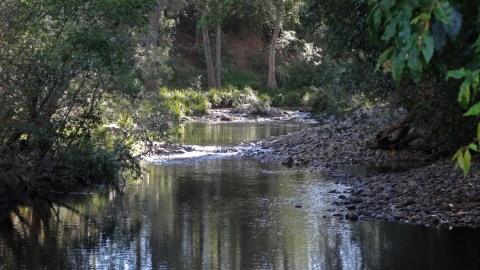This submethodology provides guidance on how to propagate uncertainty through the chain of environmental models to assess the impact of coal resource development on water and water-dependent assets. The methodology is devised to allow for maximum transparency in the modelling process. At the core of the submethodology is the structured characterisation of uncertainty through probability distribution functions, based on measurement data or from expert elicitation. Any aspect of the model that cannot be included in the formal uncertainty analysis (such as discrete choices and model assumptions) will not only be documented, but will also be submitted to a pedigree analysis to assess the quality of the model choice and the potential impact on the prediction.
This submethodology is structured around a compartmentalisation of the model chain followed by a comprehensive sensitivity analysis to identify the crucial factors that the model prediction is most sensitive to. The model prediction relates the model output to a model node via a hydrological response variable. The subset of factors the prediction is sensitive to will subsequently be used in the uncertainty analysis which propagates the uncertainty in the input factors to the prediction using a Monte Carlo approach. In the event that relevant data are available, these will be integrated in the process to constrain the probability distribution of the prediction. In order to keep the computational load manageable and the methodology amenable to automation, the uncertainty analysis will be carried out with model emulators. The resulting probability distribution functions of the impacts on the hydrological response variables will provide a starting point for the receptor impact modelling, as specified by submethodology M08 (as listed in Table 1) and reported in product 2.7 (receptor impact modelling).

